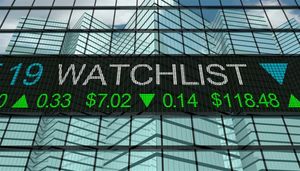
Donald Trump's increasingly deep involvement in the cryptocurrency sphere has ignited a volatile and unpredictable period within the digital asset market, presenting both unprecedented opportunities and significant dangers for investors. His endorsements, policy shifts, and the proliferation of Trump-themed memecoins have directly contributed to wild price swings, creating an environment where speculative gains are often overshadowed by the potential for substantial losses, particularly for retail investors drawn into the hype.
The immediate implications of this politically charged foray into crypto are stark. While Trump's pro-innovation stance has, at times, fueled broader market optimism, the specific assets bearing his name or likeness have become hotbeds of extreme speculation. These memecoins, often lacking intrinsic utility, see their values driven primarily by social media trends and political narratives, making them susceptible to rapid and dramatic corrections. This dynamic underscores a critical need for caution and informed decision-making among average investors navigating a market increasingly intertwined with political fortunes.
The Trump Effect: How Political Influence Reshaped the Crypto Landscape
Donald Trump's engagement with cryptocurrency has evolved from initial skepticism to an embrace that has profoundly impacted the market. This shift gained significant momentum following his 2024 US presidential election victory, after which his administration's policy stances began to coalesce around a pro-crypto narrative. A key development was the January 2025 executive order, "Strengthening American Leadership in Digital Financial Technologies," which endorsed open blockchains, self-custody, and stablecoins while explicitly banning a U.S. Central Bank Digital Currency (CBDC). This policy move was widely interpreted as creating a more favorable regulatory environment for digital assets, contributing to a surge in investor confidence and driving Bitcoin (CRYPTO: BTC) to new all-time highs.
Beyond policy, Trump's direct or indirect endorsements have acted as potent catalysts for specific tokens. The TRUMP token, for instance, witnessed an astonishing surge from approximately $1.20 to nearly $75 per coin within two days of a direct endorsement. These price movements often appear strategically timed, sometimes occurring on weekends when retail traders' influence is amplified due to the absence of traditional financial market activity, leading to abrupt fluctuations. Other Trump-themed tokens, such as $MELANIA and MAGA (TRUMP), along with tokens associated with ventures like World Liberty Financial ($WLFI), have similarly experienced meteoric rises and dramatic crashes, highlighting the highly speculative nature of these assets. The rapid ascent and subsequent decline of these tokens underscore the inherent risks in a market where value is often divorced from fundamental utility, driven instead by hype, political affiliation, and social media momentum.
Key players in this landscape include Donald Trump himself, whose statements and political actions directly influence market sentiment; the developers and promoters of Trump-themed memecoins, who often benefit from early positions and transaction fees; and, critically, the legions of retail investors who constitute the primary audience for these speculative assets. Initial market reactions have been characterized by frenzied buying sprees followed by significant corrections, illustrating the "boom-and-bust" cycles inherent to this politically charged segment of the crypto market. The interplay between political narratives, celebrity endorsement, and decentralized finance has created a unique, high-stakes environment where traditional market analysis often gives way to sentiment-driven trading.
Riding the Waves: Winners and Losers in the Politically Charged Crypto Market
The advent of Trump-themed cryptocurrencies has created a distinct hierarchy of winners and losers, primarily dictated by early involvement, market timing, and direct association with the former president. Unsurprisingly, the most significant beneficiaries have often been those closest to the source of the hype: Donald Trump and his immediate circle, along with early developers and promoters of these tokens. Reports indicate that the Trump family has amassed substantial profits from transaction fees and token sales, leveraging their brand to generate considerable wealth within this burgeoning market segment. For instance, in ventures like World Liberty Financial ($WLFI), a Trump family entity reportedly holds a significant 60% stake and retains 75% of the proceeds from token sales, raising ethical questions about concentrated ownership and conflicts of interest.
Conversely, the overwhelming majority of retail investors have found themselves on the losing end of this speculative wave. Lured by the promise of quick riches and often buying at the peak of the hype, these investors have frequently seen their portfolios decimated by rapid price corrections. Statistics reveal a grim reality: more than 80% of investors in $TRUMP memecoins have experienced losses, with some individuals losing over 80% of their initial investment. The $TRUMP token, after its initial surge, plummeted nearly 70% from its January opening price of $28.72 to around $8.63 by September 2025, and a staggering 89% from its all-time peak. Similarly, the $MELANIA token reportedly lost 96% of its value from its all-time high, while World Liberty Financial's $WLFI token experienced a 31% to 53% drop from its peak, wiping out an estimated $6.25 billion in investor wealth since its zenith.
Beyond individual investors, some cryptocurrency exchanges and platforms that list these highly volatile assets might experience increased trading volume, which translates into higher fees. However, they also face reputational risks and potential regulatory scrutiny if these assets are perceived as manipulative or fraudulent. While traditional financial institutions (such as JPMorgan Chase (NYSE: JPM) or Goldman Sachs (NYSE: GS)) are largely insulated from the direct volatility of these niche memecoins, the broader crypto market's overall sentiment, influenced by political figures like Trump, can still affect their digital asset strategies and investments in more established cryptocurrencies. The winners are those who effectively monetize political enthusiasm and market hype, while the losers are predominantly the uninformed retail investors caught in the crossfire of extreme volatility and a lack of intrinsic value.
Industry Impact and Broader Implications: Navigating a Politicized Digital Frontier
Donald Trump's deep dive into cryptocurrency is not merely an isolated event; it represents a significant confluence of politics, celebrity influence, and decentralized finance, setting new precedents for how public figures can shape digital asset markets. This phenomenon fits squarely into broader industry trends observing the increasing "financialization of fame," where public figures monetize their brand through various digital assets, from NFTs to memecoins. However, the political overlay adds an unprecedented layer of complexity, intertwining market sentiment directly with electoral cycles, policy announcements, and even social media discourse. This creates a new category of "political memecoins" whose value is almost entirely divorced from traditional fundamentals, making them highly susceptible to external, non-financial factors.
The ripple effects of this trend are likely to be widespread. Competitors within the political sphere might feel compelled to engage with cryptocurrency to connect with a digitally native demographic, potentially leading to a proliferation of other politically themed tokens. This could further fragment the market and dilute the attention given to projects with genuine technological innovation. For established cryptocurrency platforms, there's a delicate balance to strike: listing these popular but risky tokens might attract users and trading volume, but it could also expose them to increased regulatory scrutiny and reputational damage if investors suffer significant losses. The "Wild West" narrative often associated with crypto is only amplified by the entry of highly polarizing political figures, making it harder for the industry to mature and gain mainstream legitimacy.
From a regulatory standpoint, Trump's involvement, particularly the concentrated ownership and allegations of market manipulation in some projects, is a flashing red light. While his administration's pro-crypto policies aim to foster innovation by reducing regulatory friction, critics argue this lax oversight could inadvertently enable fraudulent actors to exploit unsuspecting investors. This situation could accelerate calls for more stringent guidelines specifically for celebrity-backed crypto assets and political tokens, potentially leading to new legislation or enforcement actions from bodies like the SEC (Securities and Exchange Commission) or CFTC (Commodity Futures Trading Commission). Historically, market bubbles fueled by hype and lack of intrinsic value, whether in dot-com stocks or previous memecoin crazes, have often resulted in significant investor losses and subsequent regulatory crackdowns. This current dynamic echoes those past events, suggesting that a period of increased oversight and investor protection measures may be on the horizon.
What Comes Next: The Evolving Landscape of Political Crypto
Looking ahead, the landscape of politically charged cryptocurrency is poised for continued evolution, presenting both short-term volatility and long-term strategic considerations. In the immediate future, market participants can anticipate that the value of Trump-themed memecoins will remain highly correlated with his political activities, public statements, and any significant news related to his ventures. Major political events, such as upcoming elections, campaign rallies, or policy announcements, will likely act as direct drivers of price action, leading to further boom-and-bust cycles. Short-term traders may attempt to capitalize on these swings, but the inherent unpredictability and extreme volatility will continue to pose significant risks for the vast majority of retail investors.
Long-term possibilities include the potential for other political figures to emulate Trump's strategy, leading to a broader "politicization" of the crypto market. This could result in a new class of digital assets tied to political campaigns, ideologies, or public figures, further blurring the lines between finance and politics. For the crypto industry, this trend necessitates strategic pivots: platforms may need to develop clearer guidelines for listing politically affiliated tokens, and investors will require more sophisticated tools and education to differentiate between speculative assets and those with genuine technological or economic utility.
Market opportunities may emerge for platforms that can offer robust risk management tools, transparent reporting, and educational resources specifically tailored to the unique challenges of politically influenced tokens. Conversely, challenges will persist in combating market manipulation, ensuring fair play, and protecting vulnerable investors from predatory schemes. Potential scenarios range from a gradual stabilization and eventual irrelevance of these niche tokens as political cycles wane, to a future where political branding becomes a legitimate, albeit volatile, sub-sector of the digital asset economy. Regulatory responses will be crucial in shaping these outcomes, determining whether this trend leads to a more mature and regulated market or remains a breeding ground for speculative excess.
Conclusion: Navigating the Intersection of Politics and Digital Assets
Donald Trump's deep immersion in the cryptocurrency market has undeniably become one of the most significant and fascinating financial phenomena of recent times. It has highlighted the potent influence of high-profile political figures on digital asset valuations, particularly within the highly speculative realm of memecoins. The key takeaway from this event is the stark contrast between the significant profits potentially reaped by those close to the source of the hype and the substantial losses incurred by a vast majority of retail investors, often drawn in by the allure of rapid gains without a full understanding of the underlying risks.
Moving forward, the market will undoubtedly remain sensitive to political narratives and the actions of influential figures. While Trump's pro-crypto stance has infused a degree of optimism into the broader digital asset landscape, the specific segment of politically themed tokens represents a frontier of extreme volatility and speculative risk. Investors must recognize that the value of such assets is primarily driven by sentiment, political events, and social media trends, rather than fundamental technological advancements or real-world applications.
The lasting impact of this phenomenon will likely be multifaceted. It has underscored the urgent need for enhanced investor education, greater transparency from project developers, and potentially more robust regulatory frameworks specifically designed to address celebrity-backed and politically affiliated crypto assets. What investors should watch for in the coming months are not just the price movements of specific tokens, but also the evolving regulatory landscape, the responses of major cryptocurrency exchanges (Binance (CRYPTO: BNB), Coinbase (NASDAQ: COIN)), and any shifts in public or political sentiment towards the broader digital asset space. Ultimately, while the intersection of politics and crypto offers exciting new avenues, it also demands an unprecedented level of caution and informed due diligence from all participants.






